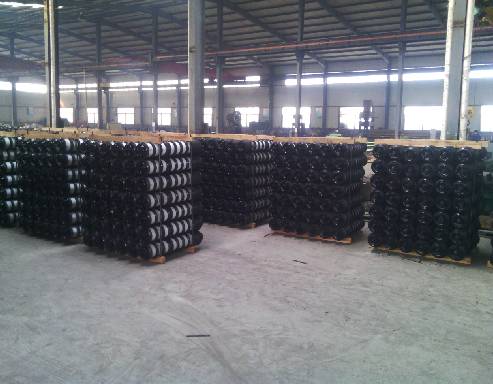 Afrikaans
Afrikaans  Albanian
Albanian  Amharic
Amharic  Arabic
Arabic  Armenian
Armenian  Azerbaijani
Azerbaijani  Basque
Basque  Belarusian
Belarusian  Bengali
Bengali  Bosnian
Bosnian  Bulgarian
Bulgarian  Catalan
Catalan  Cebuano
Cebuano  Corsican
Corsican  Croatian
Croatian  Czech
Czech  Danish
Danish  Dutch
Dutch  English
English  Esperanto
Esperanto  Estonian
Estonian  Finnish
Finnish  French
French  Frisian
Frisian  Galician
Galician  Georgian
Georgian  German
German  Greek
Greek  Gujarati
Gujarati  Haitian Creole
Haitian Creole  hausa
hausa  hawaiian
hawaiian  Hebrew
Hebrew  Hindi
Hindi  Miao
Miao  Hungarian
Hungarian  Icelandic
Icelandic  igbo
igbo  Indonesian
Indonesian  irish
irish  Italian
Italian  Japanese
Japanese  Javanese
Javanese  Kannada
Kannada  kazakh
kazakh  Khmer
Khmer  Rwandese
Rwandese  Korean
Korean  Kurdish
Kurdish  Kyrgyz
Kyrgyz  Lao
Lao  Latin
Latin  Latvian
Latvian  Lithuanian
Lithuanian  Luxembourgish
Luxembourgish  Macedonian
Macedonian  Malgashi
Malgashi  Malay
Malay  Malayalam
Malayalam  Maltese
Maltese  Maori
Maori  Marathi
Marathi  Mongolian
Mongolian  Myanmar
Myanmar  Nepali
Nepali  Norwegian
Norwegian  Norwegian
Norwegian  Occitan
Occitan  Pashto
Pashto  Persian
Persian  Polish
Polish  Portuguese
Portuguese  Punjabi
Punjabi  Romanian
Romanian  Russian
Russian  Samoan
Samoan  Scottish Gaelic
Scottish Gaelic  Serbian
Serbian  Sesotho
Sesotho  Shona
Shona  Sindhi
Sindhi  Sinhala
Sinhala  Slovak
Slovak  Slovenian
Slovenian  Somali
Somali  Spanish
Spanish  Sundanese
Sundanese  Swahili
Swahili  Swedish
Swedish  Tagalog
Tagalog  Tajik
Tajik  Tamil
Tamil  Tatar
Tatar  Telugu
Telugu  Thai
Thai  Turkish
Turkish  Turkmen
Turkmen  Ukrainian
Ukrainian  Urdu
Urdu  Uighur
Uighur  Uzbek
Uzbek  Vietnamese
Vietnamese  Welsh
Welsh  Bantu
Bantu  Yiddish
Yiddish  Yoruba
Yoruba  Zulu
Zulu Understanding the Importance of Pulley Lagging in Conveyor System Efficiency and Maintenance Strategies
Understanding Pulley Lagging Importance and Applications
In the world of mechanical engineering and industrial operations, pulleys play an essential role in the transmission of power and motion. Among the various components of a pulley system, lagging is a critical feature that significantly enhances the performance and longevity of pulleys used in various industries. This article delves into the concept of pulley lagging, its materials, benefits, and applications.
What is Pulley Lagging?
Pulley lagging refers to the process of applying a layer of material to the surface of a pulley drum. This material can be made from various substances such as rubber, ceramic, or other composite materials, each chosen based on the specific application and operational requirements. The primary purpose of lagging is to improve the friction between the belt and the pulley, thereby enhancing the efficiency of power transmission while also protecting the pulley from wear and damage.
Benefits of Pulley Lagging
1. Increased Friction The primary function of lagging is to increase the friction between the belt and the pulley. This ensures that the belt does not slip, which can lead to inefficiencies in power transmission. Higher friction also allows for more torque to be transmitted without the need for larger and heavier pulleys.
2. Protection Against Wear Pulleys are subjected to significant stress and wear over time, especially in heavy-duty applications like mining, manufacturing, and material handling. Lagging acts as a protective layer, absorbing some of the wear and tear that would otherwise affect the metal surface of the pulley.
3. Reduced Vibration Lagging materials often have damping properties that can reduce vibrations within the pulley system. This not only makes the system operate more smoothly but also minimizes noise, contributing to a safer and more comfortable working environment.
4. Improved Lifespan of Components By protecting the pulley and ensuring better contact with the belt, lagging helps extend the lifespan of both the pulley itself and the belt. This can result in lower maintenance costs and reduced downtime for industrial operations.
pulley lagging

5. Customization Lagging materials can be tailored to meet specific operational needs, such as temperature resistance, moisture resistance, or chemical resistance. This customization allows industries to select the most appropriate lagging for their unique environments.
Applications of Pulley Lagging
Pulley lagging finds applications in various sectors, including
- Mining In mining operations, where large volumes of materials are transported, strong pulley lagging is essential for ensuring efficiency and safety. The heavy loads and harsh environments necessitate robust solutions like rubber or ceramic lagging.
- Material Handling Warehouses and distribution centers rely on conveyor systems that include lagged pulleys. The improved friction and durability provided by lagging contribute to smooth and efficient material handling processes.
- Manufacturing Many manufacturing processes incorporate pulley systems for moving goods. Lagged pulleys help in maintaining the desired speed and torque, critical for automated assembly lines.
- Cement and Aggregate Industries Lagging is especially important in environments where abrasive materials are handled. The protective nature of lagging helps to mitigate the wear on pulley systems used in these applications.
Conclusion
In conclusion, pulley lagging is a crucial aspect of pulley design and functionality. By enhancing friction, protecting against wear, reducing vibrations, and improving the lifespan of components, lagging contributes significantly to the efficiency and reliability of mechanical systems. As industries continue to evolve, the importance of high-quality pulley lagging will only increase, underscoring its value across various applications. Understanding these benefits can help engineers and operators make informed decisions regarding the maintenance and operation of their pulley systems, ultimately leading to improved performance and productivity in their operations.
-
Revolutionizing Conveyor Reliability with Advanced Rubber Lagging PulleysNewsJul.22,2025
-
Powering Precision and Durability with Expert Manufacturers of Conveyor ComponentsNewsJul.22,2025
-
Optimizing Conveyor Systems with Advanced Conveyor AccessoriesNewsJul.22,2025
-
Maximize Conveyor Efficiency with Quality Conveyor Idler PulleysNewsJul.22,2025
-
Future-Proof Your Conveyor System with High-Performance Polyurethane RollerNewsJul.22,2025
-
Driving Efficiency Forward with Quality Idlers and RollersNewsJul.22,2025





























